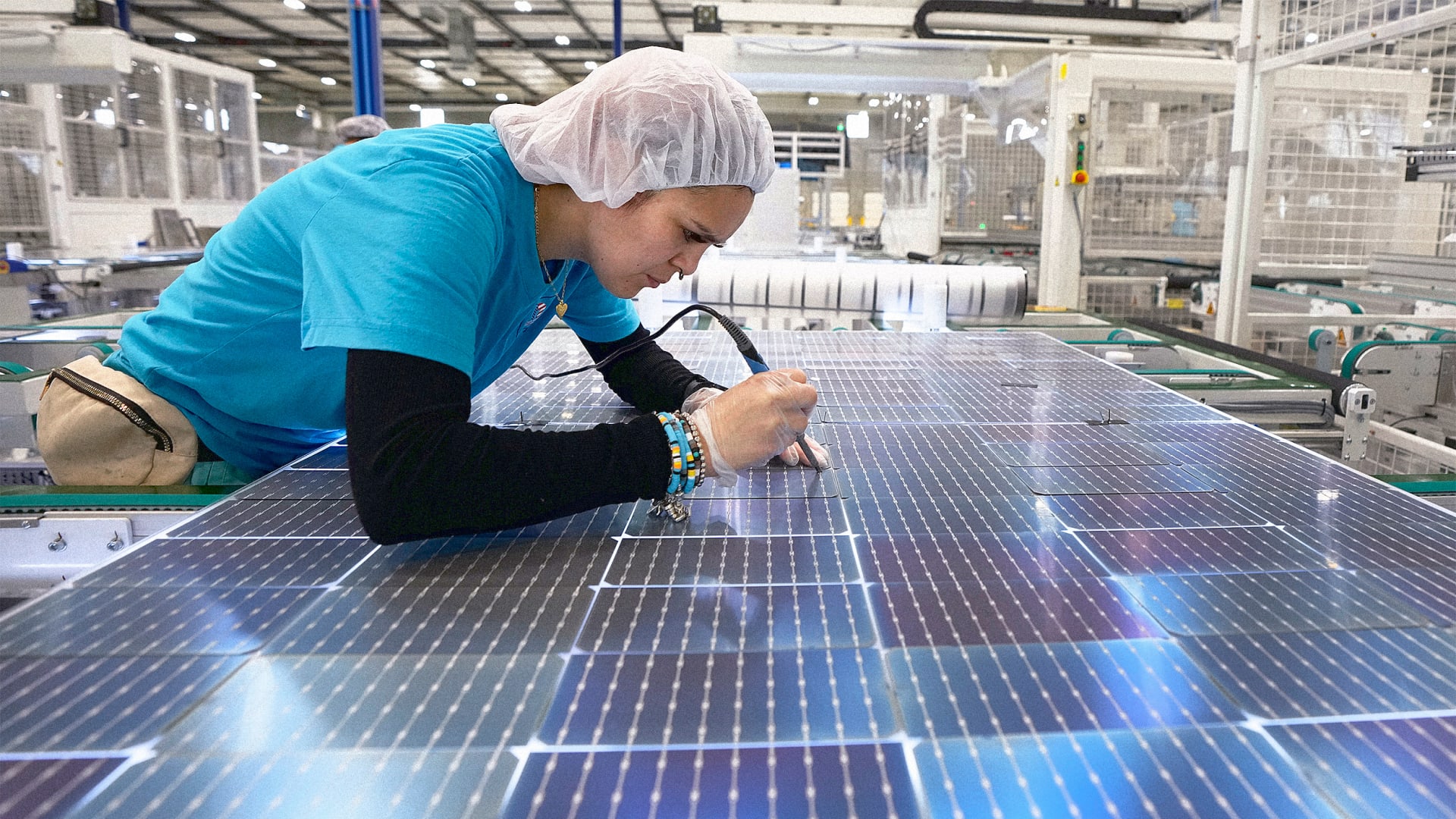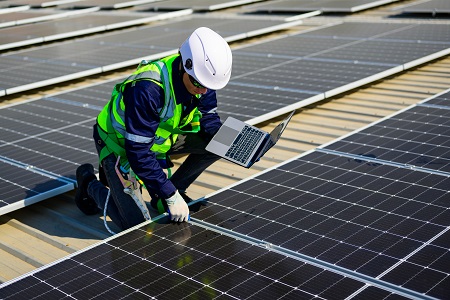Solar Energy Contractors PA: Our Company Focuses On The Setup And Management Of Photovoltaic Energy Systems
History and Advancement of Solar Panel Companies
The creation of solar panel business can be traced back to the 1800s when Alexandre Edmond Becquerel discovered the photovoltaic effect. Would he have thought of how his discovery would change the way we harness energy?
Early Starts
/https://static.texastribune.org/media/images/2014/09/29/SolarINspection.jpg)
In 1954, Bell Labs established the first useful photovoltaic cell. This marked a considerable milestone in the history of solar power. They were initially utilized to power space satellites, however who understood this was simply the beginning?
Development and Growth
- In the 1970s, an energy crisis resulted in increased interest in renewable resource sources, consisting of solar power.
- By the 1990s, improvements in innovation and increasing ecological awareness led to the growth of photovoltaic panel business worldwide.
A New Age
As we went into the 21st century, the solar industry experienced an exponential growth. The need for tidy and renewable resource produced a new age in the solar panel market.
Fascinating Facts
- The world's very first solar power station was integrated in 1982 in Hisperia, California.
- By 2019, solar energy had actually ended up being the world's fastest-growing source of power.
The journey of solar panel companies has been amazing, hasn't it? The future holds enormous potential, with constant improvements paving the method for a sustainable future. Can we visualize a world powered completely by solar energy?
Moving Forward
Today, photovoltaic panel companies continue to innovate, striving for more efficient and economical solutions. The advancement of solar power has actually come a long way, and yet, the journey has simply started.
The Core of Photovoltaic Panel Production
Ever question what enters into developing those glossy, sun-loving photovoltaic panels? The procedure is as excellent as the end product (Solar Panel Company). High-purity silicon, the primary component in solar panels, goes through numerous transformations to ensure its effectiveness and durability
From Sand to Silicon
Crystalline silicon, the foundation of many solar panels, originates from easy sand. It's a remarkable journey, isn't it? The sand goes through a high-temperature reaction with carbon to form silicon. Nevertheless, this isn't simply any silicon. The silicon utilized in photovoltaic panels is "solar-grade," with a pureness of 99.9999%. It's this purity that allows the panels to effectively convert sunshine into power.
Ingot Development
Once the silicon is pure enough, it's time to form ingots. Photo a big, round block of solid silicon. How is this attained? Through a process called Czochralski procedure, where the silicon is melted and after that gradually recrystallized. It's a sluggish dance of science, leading to a strong item that is nearly as pure as the raw silicon itself.
Slicing into Wafers
The ingots are then sliced into wafer-thin pieces, like slicing a loaf of bread. Each slice is a potential solar battery, waiting to harness the power of the sun. Did you know that the silicon wafers are just about 200 micrometers thick? That's about half the thickness of a human hair! The process needs precision and persistence, but the result is a set of wafers all set to be developed into solar batteries.
Developing Solar Battery
With the wafer ready, it's time for the magic to happen. The silicon wafer is 'doped' with other components like phosphorous and boron to develop an internal electric field. It's this field that allows the conversion of sunlight into electrical energy. Complex, isn't it?
Assembly and Quality Control
Solar battery are like puzzle pieces that come together to form a solar panel. The cells are soldered together in a grid-like pattern, then covered with a protective layer of glass. The last action involves extensive quality assurance checks. It's necessary that every solar panel carries out at its peak, would not you concur?
Expert Pointer
Always keep in mind that even the most efficiently manufactured solar panel can lose performance due to dirt and debris accumulation. Routine cleansing can considerably improve your panels' efficiency.
Comprehending the Environmental Effect of Photovoltaic Panel Business
Ever contemplated the environmental footprint of a solar panel company? Green technology, such as solar, has transformed our energy landscape, but what about the behind-the-scenes effect?
The Production Process: A Double-Edged Sword
The manufacturing procedure for solar panels requires a significant amount of energy. This process, known as 'em bodied energy', can be seen as a check here type of 'energy financial obligation'. It's a little like borrowing today's sunshine to power tomorrow's energy requirements. But fret not, the energy repayment time is typically shorter than you 'd think!
- The energy payback duration for photovoltaic panels is generally 1-4 years.
- After this period, the energy produced is essentially carbon-free.

Life After Decommission
And what occurs when a photovoltaic panel reaches completion of its life expectancy? Can it just be tossed into the trash? No, that wouldn't be extremely green, now, would it?
A practical option is recycling. While solar panel recycling is still in its infancy, it holds a world of potential. Recycling not only keeps materials out of garbage dumps but also reduces the requirement for brand-new raw products.
Accountable Sourcing: More Than A Buzzword
Where does the silicon originated from, you ask? Sadly, the industry's demand for silicon and unusual minerals can result in destructive mining practices. Responsible sourcing is therefore vital to reduce harmful environmental impacts.
Reduced Carbon Emissions: The Bigger Photo
Let's not forget the bigger image: solar power considerably minimizes carbon emissions. As soon as set up, photovoltaic panels create tidy, renewable resource, balancing out their preliminary manufacturing footprint.
In other copyright, the ecological effect of photovoltaic panel companies is a complex problem. However, with responsible practices, the promise of a cleaner, greener future is well within our grasp.

Financial Efficiency and Market Share of Photovoltaic Panel Business
Ever questioned why some photovoltaic panel business - Residential Solar Panels PA outshine others in the market? What sets them apart? The key lies in their monetary efficiency and market share
Financial Efficiency: A Crucial Indicator
Financial efficiency plays a critical function in the success of any organization. For photovoltaic panel companies, it's no various. Strong monetary efficiency enables these business to buy innovative technology, research study, and advancement, thereby creating top quality, effective solar panels.
How do they attain this? With a concentrate on cost efficiency and tactical financial investments. Business that handle to reduce production expenses without compromising on quality tend to fare much better in the market.
Market Share: A Step of Success
Market share, on the other hand, is a direct reflection of a business's appeal among customers. A high market share suggests more homeowners are selecting their solar panels over rivals.
What's the secret dish for getting a larger market share? It boils down to consumer satisfaction and brand reputation. Companies that focus on client requirements and keep a favorable brand image are most likely to catch a larger share of the market.
- Client Fulfillment: Photovoltaic panel business that provide trustworthy products and extraordinary consumer service tend to have higher client fulfillment rates.
- Brand name Track record: A strong brand name credibility is developed gradually through consistent delivery of quality items and services.
Financial Efficiency and Market Share: The Symbiotic Relationship
Surprisingly, the relationship in between monetary efficiency and market share is not one-sided. They feed off each other. A strong monetary efficiency can increase a business's market share, while a high market share can enhance financial efficiency.
As a photovoltaic panel company, stabilizing these two aspects is crucial for long-lasting success. A company that overlooks either of them may discover it challenging to preserve its position in the competitive solar industry.
The Takeaway
So, what does all this mean for you? Whether you're a homeowner seeking to set up photovoltaic panels or an investor eyeing the solar industry, comprehending the monetary efficiency and market share of photovoltaic panel business is important. They are key indicators of a business's health and capacity for future development.